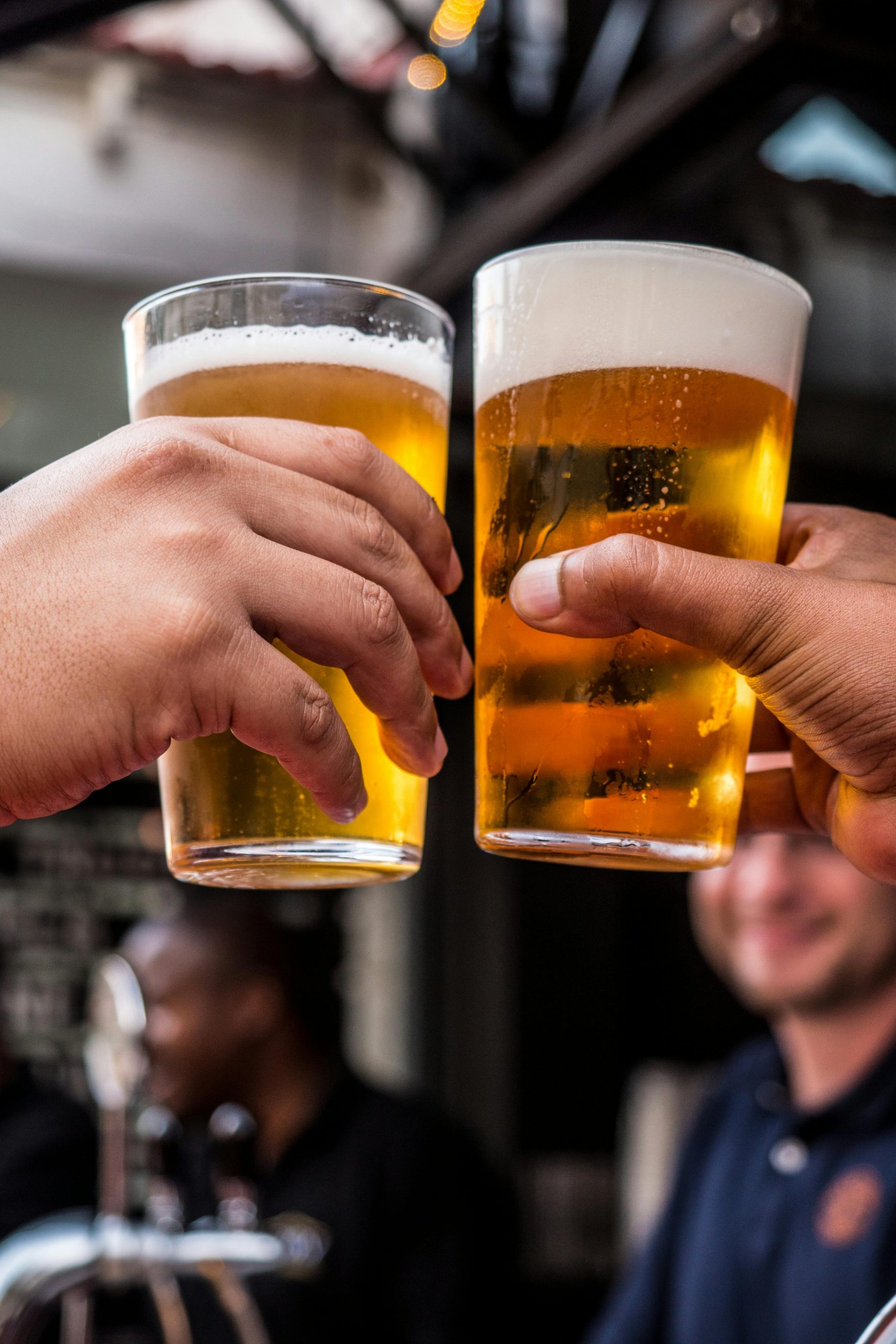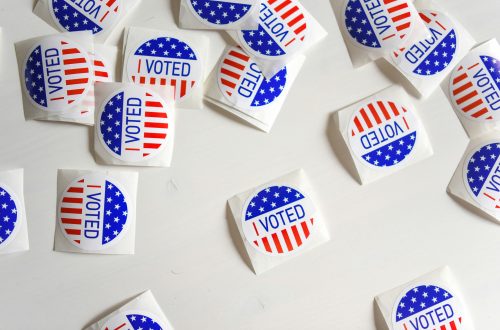
The Beverage That Globally Defies People’s Human Rights
By Joey Hall
What is one of the biggest global problems that causes death in America that occurs almost every hour? Most people may be thinking of things like heart diseases or maybe even homicides/murders. This is definitely correct, as according to HealthPolicyOhio.org, the top ten leadings causes of death in Ohio from 2021 were (from highest to lowest) “unintentional injuries, cancer, heart disease, COVID, suicide, diabetes, liver diseases, lower respiratory diseases, strokes, and homicide” (2022). However, what isn’t stated in those statistics is a common factor that many of those causes can be linked to: alcohol. Alcohol is an enormous problem that has been around for hundreds of years, and has always caused more issues than it could ever solve. It is linked to so many problems in the world, including all of, if not most, of the leading causes of death. With how many deaths, illnesses, and overall negative outcomes that get caused by alcohol, whether it be directly or indirectly, it all adds to the fact that alcohol is one of the biggest offenders of people’s human rights. Human rights are rights that we are naturally born with, or at least are supposed to be, that protect people’s individual and/or collective well-beings. While we all have rights as humans, alcohol tears so many of those rights away from anyone in proximity to the substance. One of the biggest and most common occurrences of this stripping of human rights is when people get behind the wheel and start driving while under the influence of alcohol.
Drunk driving is one of the leading causes of death in the U.S. and even throughout the world. The alteration of the state of mind that alcohol provides to the consumer is unsafe whilst driving, and creates a dangerous environment for all people around the driver. This often will result in collisions or just general unsafe driving, which both can lead to death or severe injuries. According to the National Highway Traffic Safety Administration, “Every day, about 32 people in the United States die in drunk-driving crashes – that’s one person every 45 minutes” (NHTSA 2021). One of the biggest ways to violate someone’s human rights is to take their life entirely. Drunk driving often results in the violation of two people or more’s rights by this standpoint. Not only does drunk driving get people killed, it is also illegal after a certain amount of consumption.
Drunk driving itself is illegal, and driving while having a blood-alcohol level of above 0.08 will get you charged with an actual crime. According to DUI Driving Laws, “In Ohio, a driver can be convicted of a “per se” alcohol OVI for operating a vehicle with a with a blood alcohol content (BAC) of .08% or greater (or urine alcohol concentration of .11% or more)” (2023). This violation of the law itself could be viewed as a human rights violation, as you’re actually breaking a law that was made to protect the overall good of everyone.
Similarly to the good of everyone, driving is a lot of people’s freedom. It is a place where people can escape whatever issues they’re currently going through, and just go for a cruise. They may be driving to a specific place, or maybe the road itself is the destination in which they are seeking. However, all of a sudden, there’s a man swerving in and out of lanes, going extremely fast. Suddenly this place of freedom and bliss is now extremely dangerous, and the very reason people drive in the first place is now being defied. This is essentially a forceful cross into each others’ “contact zones”. Contact zones are “social spaces where cultures meet, clash, and grapple with each other, often in contexts of highly asymmetrical relations of power” (Pratt, 1991). In the case of drunk driving, being on the same road as a drunk driver would be coexisting in one contact zone, in particular, a very dangerous contact zone. This coexistence could be considered another violation of your human rights, as it is a violation of your safety as a person. In a similar space as that of contact zones, alcoholism can also be considered an offension of another human right people possess, that being the freedom of religion. Drinking around those of the particular religions that deem alcohol as a sin may feel offended or violated by others drinking in front of them. This could potentially be considered by those with these beliefs to be a violation of their human rights.
Continuing on with how alcohol violates other peoples’ human rights, the differed state that alcohol puts people in can often change how people are feeling. This can turn into, happiness, sadness, but most importantly, anger. There have been so many cases of people who drink too much alcohol end up getting in fights with people, often for no real reason. This change in behavior could result in both a violation of the drinker’s rights, along with the people around them. Drunk people have been known to say things that can make people uncomfortable whether it be offensive, strange, or just things you generally do not say. These could result in them ruining their relationships with other people. While drunk driving can be from a one-time thing, prolonged exposure to a person with alcoholism can cause some debatably worse problems.
Coping is one of the biggest reasons people drink. They have problems that they do not want to deal with directly, and find a short-term solution to this problem in the form of alcohol. This short-term solution could be considered a violation of their own human rights, as they aren’t actually solving their problems. The alcohol is just there to give them temporary satisfaction. There have also been studies about how alcoholism and mental illnesses, like depression, feed into each other. According to Nguyen, “First, alcohol interventions can either directly influence depression and anxiety symptoms through the improvements of coping skills, motivation to change, and perceived social support, which in turn may reduce depression and anxiety” (2022). This study talks about how depression and anxiety have a direct connection to alcohol, and how interventions
Addiction denial is also a huge problem when it comes to alcoholism, not to mention any other type of addiction. Recognizing that there’s a problem is the first step in correcting that problem. “…patients who increasingly recognized alcohol use problems over a 9-month period exhibited significantly greater alcohol use severity at 9 months and a significant increase in alcohol use severity over time. Moreover, patients who became increasingly determined to take actions against alcohol use over a 9-month period exhibited significantly lower alcohol use severity at 9 months and a significant decrease in alcohol use severity over time” (Zhang, Harmon, Werkner, & McCormick, 2008, p. 121). According to this study, it quite literally is helpful to know that alcohol addiction is a problem and to understand that it is detrimental in order to actually be able to stop yourself from drinking.
With alcohol being such a problem, there are even organizations that formed in order to try to mitigate the number of alcoholics or people addicted to drinking. One of these organizations is known as “Alcoholics Anonymous”. “Alcoholics Anonymous (AA), (is a) worldwide organization dedicated to the treatment of alcoholics; founded 1935 by two alcoholics, one a New York broker, the other an Ohio physician. They developed a 12-step program that has made coping with alcoholism possible for countless people” (AA, 2021). There are over 99 thousand groups in the U.S., with over 2 million people worldwide being members. This is very telling that alcoholism is a problem, if a group of people have recognized how bad it can become and are trying to solve this problem. Stopping the problem at its source would be an excellent solution to mitigate all violations of human rights.
There are so many ways in which you can prevent alcohol reliance. One very common remedy is therapeutical methods. According to research conducted by Nguyen & co. “ART clients 18 years old or more with hazardous alcohol use (based on the Alcohol Use Disorders Identification Test-Consumption) were enrolled and randomized into one of three arms: Combined intervention, Brief intervention, and Standard of care (SOC). Symptoms of depression, measured with the Patient Health Questionnaire-9, and anxiety, measured with the Generalized Anxiety Disorder-7 scale, were assessed at baseline and 3, 6, and 12 months post-intervention. Generalized estimating equations were used to evaluate the effects of the interventions on depression and anxiety symptoms. The prevalence of depression and anxiety symptoms at baseline was 25.1% and 16.1%, respectively. Decreases in depression and anxiety symptoms were observed in all three arms from baseline to 12-month follow-up. There were no significant differences in depression and anxiety symptoms among participants receiving either intervention” (Nguyen 2022). Based on Nguyen and co.’s research, it seems as though interventions are not helpful in reducing a person’s alcoholism, while the standard of care, typically therapy, is most effective of the tested remedies.
It is also possible to determine potential alcoholism by looking at family history. Like most diseases, alcoholism can be hereditary. If a family has had a drinking problem throughout the years, that can lead to their kids to also have addiction problems when it comes to alcohol, and possibly even more. In addition, genetic screenings have been known to be useful in determining if and how alcoholism can affect the individual. According to Dennis Thombs, who was a member of the Department of Adult, Counseling, Health and Vocational Education at Kent, “Billions of dollars are being spent on genome research for the purpose of developing effective technologies to treat and prevent disease” (2001). This source is actually about alcoholism in students, and how they make use of screenings in order to observe the differences in genomes to determine potential alcoholism. It demonstrates one method in which we can identify alcoholistic traits in individuals to try to eliminate the problem that alcoholism is.
All in all, alcoholism truly is a major offender of peoples’ human rights. Alcohol should never be treated as a solution to any problems. If anything, it is the problem itself that needs a solution found. While there are small things that alcohol can improve, like how people say that red wine is good for your heart, it also produces many more detrimental effects. Tons of diseases and health problems develop due to overconsumption. In addition, the actual physical and neurological effects that alcohol has on the brain and body cause even more problems for others than it does for the consumer. Now normally when laws are repealed it’s for a good reason. Poll taxes, three-fifths compromise, and overall racial superiority/inequality were all removed after the U.S. realized the human rights violations they were performing. Alcohol and the removal of Prohibition is definitely not comparable to these two issues, with the Prohibition of alcohol actually doing quite the opposite. Prohibition was actually done in order to protect peoples human rights, by preventing people from becoming alcoholics and ruining their and other people’s live in the process. So, if we are using the logic that the racial inequality was corrected by removing all of these laws that violated African Americans’ human rights, then we should have kept Prohibition because it removed something (alcohol) that also violates tons of peoples’ human rights. Even If you’ve read through this and you are not persuaded to stay away from the bottle, please just promise one thing. If you’re going to drink, DO NOT drive.
References
Alarefi, A., Wang, X., Tao, R., Rui, Q., Gao, G., Wang, Y., Pang, L., Liu, C., & Zhang, X. (2022). Depicting People in Visual Cues Affects Alcohol Cue Reactivity in Male Alcohol-Dependent Patients. Brain Sciences (2076-3425), 12(3), 307. https://doi-org.proxy.library.kent.edu/10.3390/brainsci12030307 https://proxy.library.kent.edu/login?url=https://search.ebscohost.com/login.aspx?direct=true&db=a9h&AN=155979817&site=ehost-live
Alcoholics Anonymous. (2021). Columbia Electronic Encyclopedia, 6th Edition, 1. https://proxy.library.kent.edu/login?url=https://search.ebscohost.com/login.aspx?direct=true&db=lfh&AN=134480409&site=ehost-live
Amy Y. Zhang PhD , Julie A. Harmon PhD , Janet Werkner PhD & Richard A. McCormick PhD (2006) The Long-Term Relationships Between the Motivation for Change and Alcohol Use Severity Among Patients with Severe and Persistent Mental Illness, Journal of Addictive Diseases, 25:1, 121-128, DOI: 10.1300/J069v25n01_14 https://www-tandfonline-com.proxy.library.kent.edu/doi/pdf/10.1300/J069v25n01_14
Bohle, T. (2018). Two Persons Holding Drinking Glasses Filled With Beer [Photograph]. Pexels. https://www.pexels.com/photo/two-persons-holding-drinking-glasses-filled-with-beer-1089930/
CottonBro Studio. (2020). A Man Sitting In Front Of A Table With A Glass Of Wine [Photograph]. Pexels. https://www.pexels.com/photo/a-man-sitting-in-front-of-a-table-with-a-glass-of-wine-6603395/
CottonBro Studio. (2020). Home Unhealthy Kid Sad [Photograph]. Pexels. https://www.pexels.com/photo/home-unhealthy-kid-sad-6603351/
Daniel, R. W. (1960). Babes In The Woods. Vital Speeches of the Day, 26(7), 219. https://proxy.library.kent.edu/login?url=https://search.ebscohost.com/login.aspx?direct=true&db=buh&AN=9810999&site=ehost-live
Hall, O. T., Phan, K. L., & Gorka, S. (2022). Childhood Adversity and the Association Between Stress Sensitivity and Problematic Alcohol Use in Adults. Journal of Traumatic Stress, 35(1), 148–158. https://doi-org.proxy.library.kent.edu/10.1002/jts.22709 https://proxy.library.kent.edu/login?url=https://search.ebscohost.com/login.aspx?direct=true&db=mdc&AN=34263960&site=ehost-live
Hall, W., Darke, S., Humphreys, K., Marsden, J., Neale, J., & West, R. (2020). Addiction’s policy on publishing effectiveness studies of involuntary treatment of addiction and its variants. Addiction, 115(10), 1795–1796. https://doi-org.proxy.library.kent.edu/10.1111/add.14933 https://proxy.library.kent.edu/login?url=https://search.ebscohost.com/login.aspx?direct=true&db=fsr&AN=145667445&site=ehost-live
HPIO. (2022). What are the trends in death among working-age Ohioans? Death trends among working-age Ohioans. Retrieved April 12, 2023, from https://www.healthpolicyohio.org/wp-content/uploads/2022/06/WorkingAgeDeaths_DataSnapshot.pdf
Just4dogs.gr. (Budweiser) (2017, April 17). Someone Waits For You At Home, DON’T DRINK & DRIVE Budweiser Ads [Video]. YouTube. https://www.youtube.com/watch?v=DdbmJWzOlBY
Kulakov, A. (2019). A Broken Windshield Of A Car [Photograph]. Pexels. https://www.pexels.com/photo/a-broken-windshield-of-a-car-2265634/
Lee, M., & Seo, M. (2022). Effects of Human Rights Sensitivity on Empathy and Working Relationship in Mental Health Social Workers: Using Vignettes of Schizophrenia and Alcoholism. International Journal of Environmental Research & Public Health, 19(14), 8668. https://doi-org.proxy.library.kent.edu/10.3390/ijerph19148668 https://proxy.library.kent.edu/login?url=https://search.ebscohost.com/login.aspx?direct=true&db=fsr&AN=158242790&site=ehost-live
Miller, W. R., Moyers, T. B., Osborn, C. J., & Thombs, D. L. (2002). Understanding of Addiction Scale–Revised. Journal of Teaching in the Addictions, 1, 5–18. https://proxy.library.kent.edu/login?url=https://search.ebscohost.com/login.aspx?direct=true&db=hpi&AN=HaPI-242719&site=ehost-live
Nguyen, M. X., Reyes, H. L., Pence, B. W., Muessig, K. E., Hutton, H. E., Latkin, C. A., Dowdy, D., Chander, G., Lancaster, K. E., Frangakis, C., Sripaipan, T., Tran, H. V., & Go, V. F. (2022). Effects of Two Alcohol Reduction Interventions on Depression and Anxiety Symptoms of ART Clients in Vietnam. AIDS and Behavior, 26(6), 1829–1840. https://doi-org.proxy.library.kent.edu/10.1007/s10461-021-03532-1 https://proxy.library.kent.edu/login?url=https://search.ebscohost.com/login.aspx?direct=true&db=mdc&AN=34807321&site=ehost-live
NHTSA. (n.d.). Drunk driving. Drunk Driving. Retrieved April 12, 2023, from https://www.nhtsa.gov/risky-driving/drunk-driving#driving-after-drinking-5036
Nolo. (2022, April 19). Ohio drunk driving laws and penalties. dui.drivinglaws.org. Retrieved April 12, 2023, from https://dui.drivinglaws.org/ohio.php
Pratt, Mary Louise. “Arts of the Contact Zone.” Profession, vol. 91, 1991, pp. 33-40. https://cyberspacerobinson.org/courses/cw2/cw2materials/pratt.pdf
Rafiee, G., Ahmadi, J., & Rafiee, F. (2020). Prevalence of Substance Abuse (Tobacco, Alcohol, Narcotics and Psychotropic Drugs) and Its Relationship to Family Factors in Pre-university Male Students in Shiraz 2017-2018. Journal of Community Health, 45(1), 176–182. https://doi-org.proxy.library.kent.edu/10.1007/s10900-019-00709-7
Smith, K. (2017). Woman Holding Her Head [Photograph]. Pexels https://www.pexels.com/photo/woman-holding-her-head-551588/
Thombs, D. L., Mahoney, C. A., & Olds, S. (2001). Balancing risks and benefits of deception in assessing genetic screening utilization. American Journal of Health Behavior, 25(2), 100–105. https://doi-org.proxy.library.kent.edu/10.5993/AJHB.25.2.2 https://proxy.library.kent.edu/login?url=https://search.ebscohost.com/login.aspx?direct=true&db=psyh&AN=2001-00097-002&site=ehost-live
All images complement of pexels.com, a copyright-free image site.



